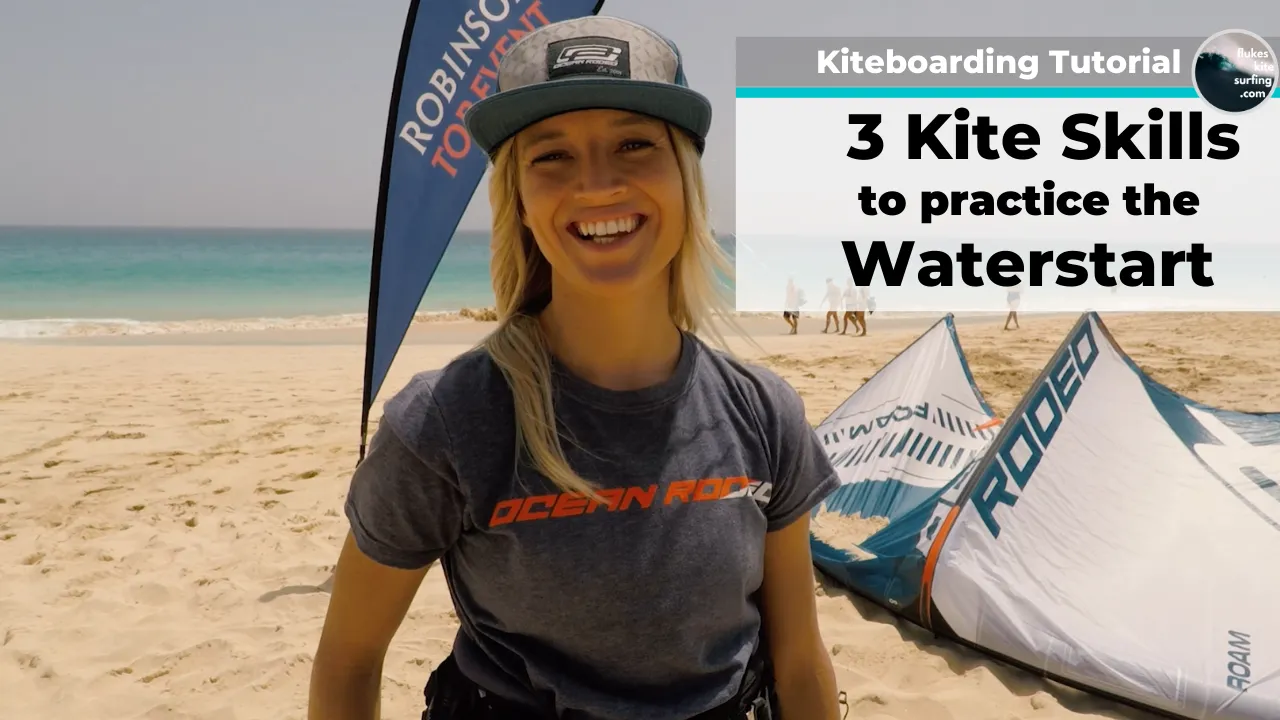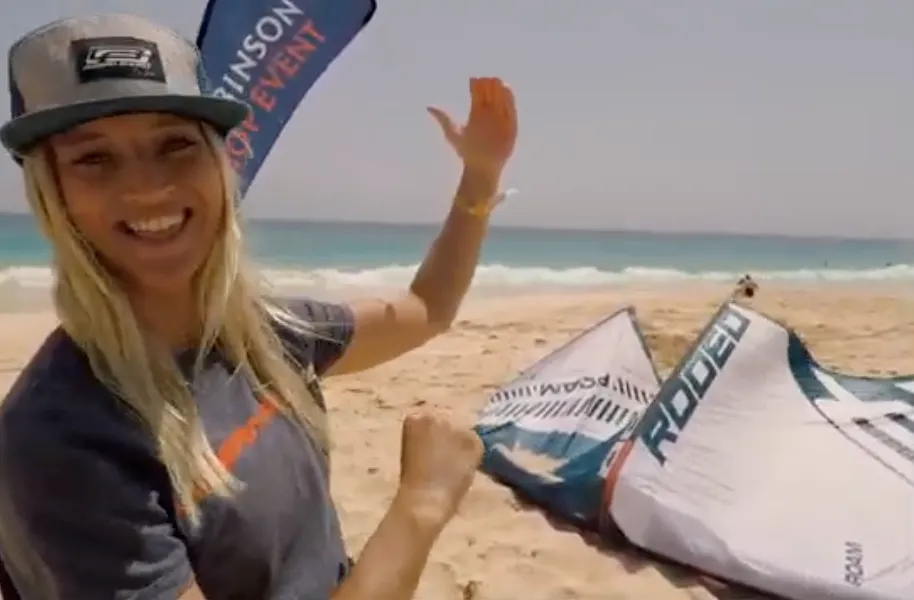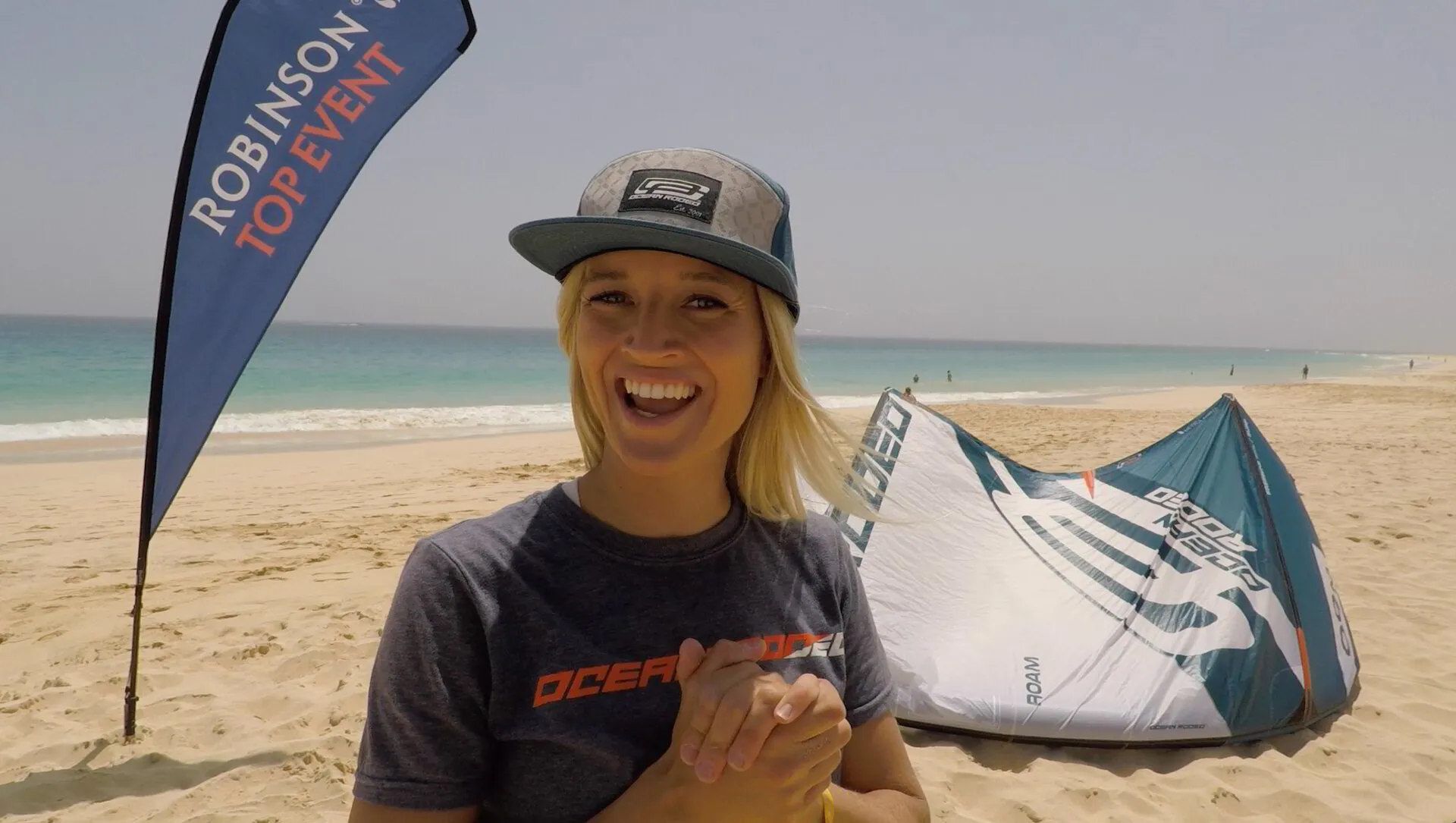Kiteboarding Tutorial to practice
the Waterstart
This is a kiteboarding tutorial to help you master the waterstart; to get up and riding, cruising along the water's surface and kiting off into the sunset :) ... Below we break down the Waterstart into 3 Fundamental Kite Flying Skills that are the backbone of the Water Start.
This is the perfect kiteboarding tutorial for you if;
✔︎ You are a beginner kiter
✔︎ It's been a long period of time since your last time kiting or last kite lesson ( ie: vaca last year)
✔︎ You can sometimes do a waterstart just not yet consistently
✔︎ You are an independant kiter but struggling with the waterstart
Keep reading to get the breakdown of each kite skill and watch the video tutorial below.
Link here if video does not display: Kiteboarding Tutorial: 3 Kite Skills to practice the Waterstart
3 Kite Skills to Practice the Waterstart
Here are 3 kite flying skills that break down the waterstart into smaller goals to master.
- Flying the Kite 1 Handed
- Parking the Kite
- Continuous Kite Flying
Successful kiteboarding really comes down to improving kite control and how proficient you are as a kite pilot.
Typically to do a waterstart will take 1-2 maybe 3 power strokes to roll out of the water and into standing position plus a couple more power strokes before you can park the kite and continue riding.
So, if you are struggling to master the almighty waterstart, but are looking at these kite skills and thinking to yourself 'these are only for beginners' , be patient my friend :) these are the kite skills that not only make up the waterstart, but what you will be using every session.
Skill #1: Flying the kite 1 handed
Flying the kite 1 handed is an important step to have mastered before you start attempting a waterstart. Here's how to fly the kite 1 handed, some examples of when you would do this, and where to position the kite in the wind window while flying the kite 1 handed.
You will be flying the kite 1 handed every session, for example when;
- you go to pick up your board
- walking down to the water carrying your board
- body dragging a safe distance away from shore
- passing the board in front of you,
- and getting your feet into the twintip footstraps, or on the deck of your surfboard if strapless
- and eventually, flying the kite 1 handed while riding (this is the secret to being able to kite upwind!)
How do we fly the kite 1 handed
Top hand flys the kite. Which side of the wind window the kite is flying will determine the top line, the steering line closest to 12 o'clock. We use our top hand to maintain tension on that topmost steering line to control the kite and position the kite exactly where we want in the wind window.
Where to position the kite in the Wind Window (flying 1 handed) when:
- walking to the water - somewhere between 12 o'clock & 45 degrees to the water
> try 1 hour off 12o'clock to move around slow & in control. - picking up your board - bring the kite to 1 hr off 12o'clock = less pull and you can easily bend down and pick up your board without being pulled around
- wading in to the water - kite closer to 12o'clock , or , somewhere between 12o'clock & 45 degrees
- body dragging: kite lower- closer to 45 degrees from the water to move a safe distance away from shore. This is a travelling position for the kite, and we want to use it to move away from shore.
- passing the board in front of you- kite higher = closer to 12
- now you are ready to send your first power stroke
Skill #2: Parking the kite
Parking the kite means flying the kite to a clock position in the wind window and holding it there. For the water start particularly there are 2 key clock positions to park the kite at. This is actually a really good skill to practice parking the kite at each clock position in the wind window, but for the waterstart in particular there are 2 key clock positions:
- Parking the kite at 45 degrees
- and Flying the kite back up to 12 o'clock & park, without going past 12...
> Parking the kite at 45 degrees- between 12 o'clock and the water, the kite will either be positioned at 10:30 or 2:30 in the wind window.
Fly the kite to around 45 degrees, between 12 o'clock (Zenith) and the water and keep the kite parked there. This simulates the Riding Position where you can park your kite to continue riding along the water after your initial water start + power strokes.
The kite at 45 degrees is slightly ahead of you and it feels really natural using your top hand to fly the kite, all the while maintaining that perfect amount of bar pressure to keep tension on that top steering line to hold the kite in a steady position. You will need to be slightly sheeting in and sheeting out to maintain the pefect amount of bar pressure and keep the kite parked in this position.
> Fly your kite up to 12 and hold, without sending the kite past 12.
Flying the kite up to 12 and holding it there will help us with 2 things; the continuation of riding and slowing down as well.
To maintain riding: we have to be able to fly the kite up to 12 without going past to the other side of the wind window. If the kite travels back through to the other side of the wind window (opposite to your desired direction of travel) you will lose your forward momentum to continue riding, and likely, outrun your kite.
Flying the kite back up to 12 o'clock is an important step in the waterstart to get up riding. Here, the kite gives you upward lift to help you stand up out of the water, and for the opportunity to dive your kite into the next power stroke.
How to stop the kite at 12: Fly the kite up to 12 and gently sheet out to stop the kite at 12, and slightly sheeting in again to hold it there, don't let the kite go past 12. This is also how you manage your speed to slow down: flying the kite up to 12 while steadily sheeting out.
Skill #3: Continuous kite flying
The secret to getting up and riding, continuous kite flying!
Continuous Kite flying means the kite is never parked, but rather constantly being piloted between 2 different clock positions in the wind window. Getting used to flying the kite continuously will help you with better kite control, and will be the secret to getting up and riding from the waterstart.
Continuous Kite flying is done anytime we need to build some apparent wind in the kite. During the Water start this will happen after your first power strokes and before you can park the kite to continue riding.
This skill will help you specifically with the water start by being able to confidently send the kite in the first power stroke followed by continuous kite flying.
Common mistakes we see beginner kiters make is only diving the kite 1 once. By having practiced continuous kite flying you are building muscle memory for kite flying.
Power Strokes vs. Continuous Kite Flying : What's the Difference?
A power stroke sends the kite downwind and through the power zone - more power to get out of the water and roll into standing. Continuous kite flying is used to generate apparent wind, keeping the kite active and more stable by wind constantly flowing over the canopy.
A power stroke sends the kite more downwind through the power zone and will likely cover a larger span across the wind window, for example, a big power stroke starting from 1 o'clock, through the power zone to 10 o'clock on the other side of the wind window, and back up to 12.
Continuous kite flying can be simple micro movements to keep the kite active and in constant motion, or larger movements like choosing to clock positions to fly the kite between (after 1st power stroke and before you can park the kite) .
How To fly the kite continuously
> Choose 2 clock positions to fly the kite continuously between.
Start with smaller movements.
Try flying from 11 up to 12 and back to 11 o'clock continuously, nonstop.
Flying the kite up and down by counter steering the kite as it gets to the determined clock position, slightly sheeting in/out on the bar while steering to achieve the desired responsiveness from the kite.
Practice flying the kite perfectly between your set clock positions.
Sheet the bar slightly in to initiate more direct steering, remember outside lines are the kites steering lines. The more slack in the lines the slower the kite will move and react, the more tension equals the most direct steering input. We use a combination of bar pressure-sheeting in/out , while steering, to
to achieve the desired steering input- how fast or slow the kite moves in response.
Practicing for the water start:
Sheet in and steer the kite to 45 degrees, counter steer and anticipate the next move before the kite reaches your maker, fly the kite up to 12, sheet out to stop the kite from travelling past 12 and get ready to sheet in + steer the kite again.
In Summary
These 3 kite skills; flying the kite 1 handed, parking the kite and continuous kite flying are a part of kiteboarding that make every session. Typically to do a waterstart will take 1-2 maybe 3 power strokes to roll out of the water and into standing position and maybe a couple more power strokes before you can park the kite and continue riding. Remember that success ultimately happens with better kite control.
Thanks for checking out this kiteboarding tutorial 3 Kite Skills to Practice the Water Start.
We hope this helps, have fun practicing and let us know how you go in the comments box below.




